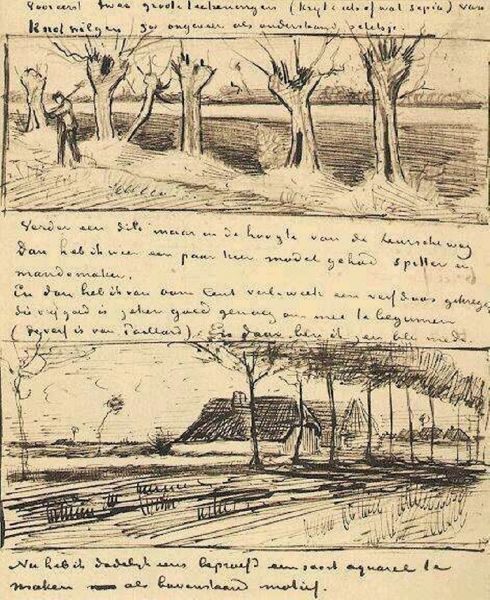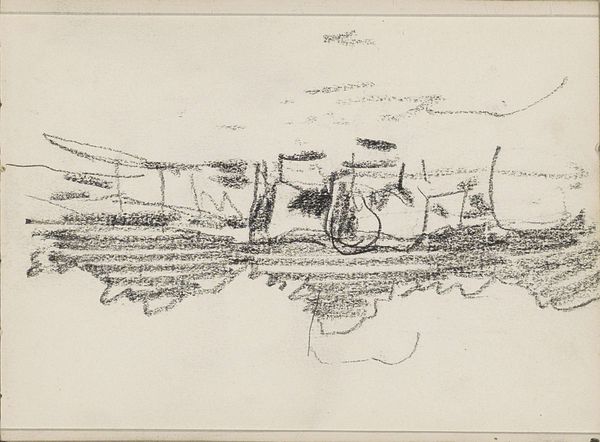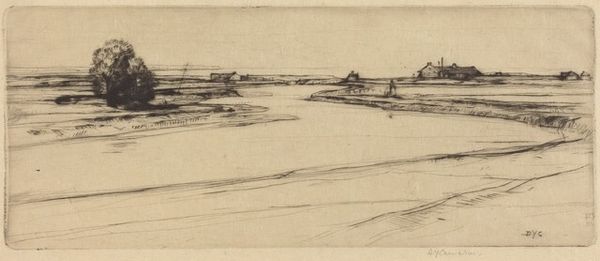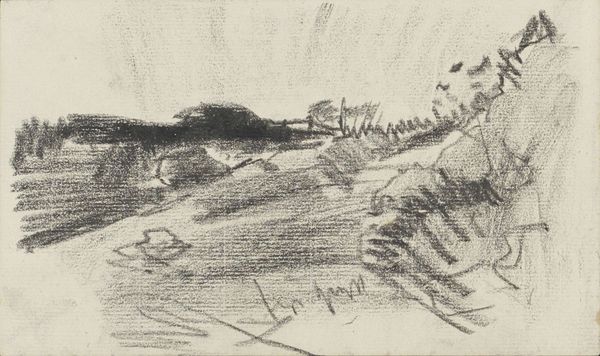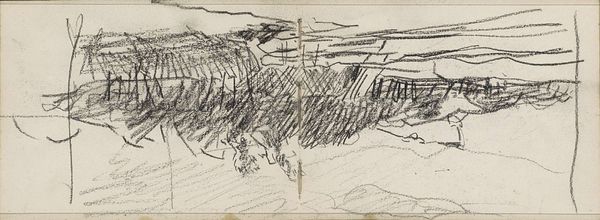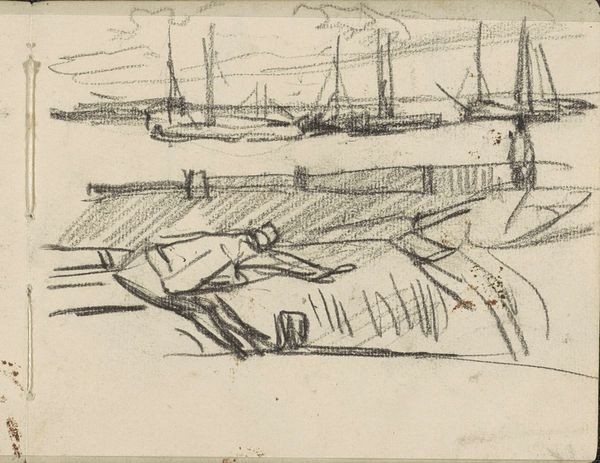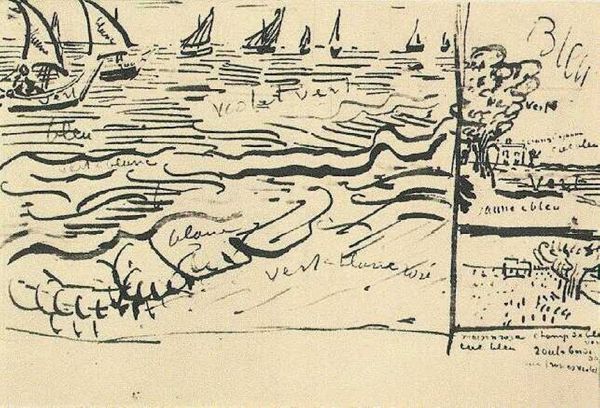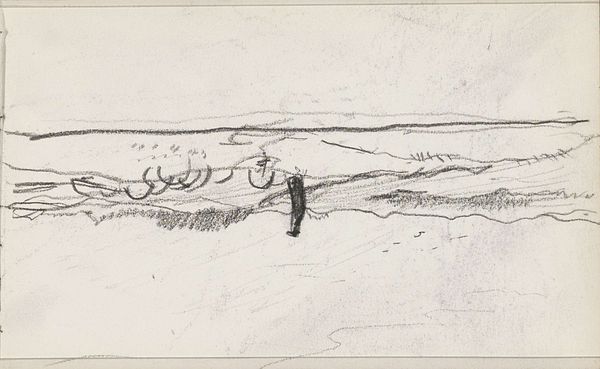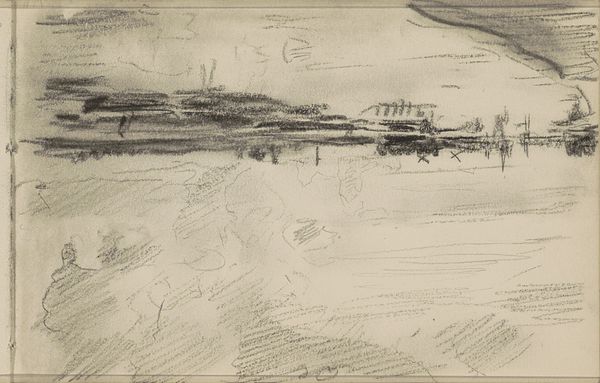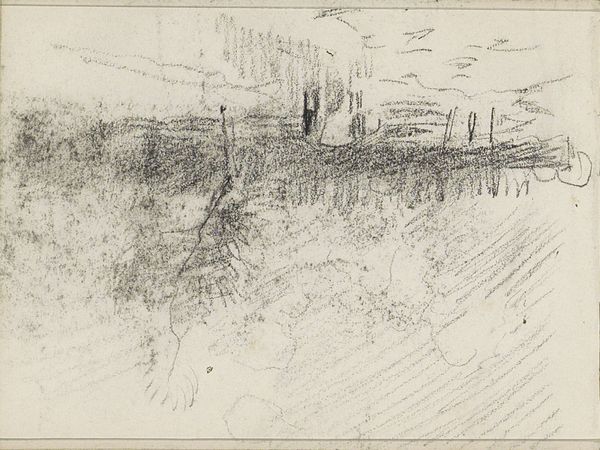
drawing, paper, ink
#
drawing
#
impressionism
#
landscape
#
figuration
#
paper
#
ink
#
line
Copyright: Public domain
Curator: Here we have Vincent van Gogh's "Sunset Over a Meadow," a drawing completed in 1882. It is made with ink on paper and is currently held at the Van Gogh Museum in Amsterdam. Editor: My immediate impression is one of bleakness. The starkness of the ink combined with the minimalist composition evokes a sense of isolation, even abandonment. The landscape seems barren despite its title suggesting vibrant color. Curator: The artwork provides a view into Van Gogh’s artistic development during his early period in The Hague. One can see that the social realism he absorbed at the time shaped not only his subject matter, rural labour, but also his technical experiments, for example with perspective, which give such depth to the composition. The quickness of lines hint at an early impressionist influence. It suggests something of the socio-economic realities faced by rural populations. Editor: The perspective you mention is particularly striking, how the converging lines pull you into the scene and create an almost claustrophobic sensation, despite the open sky. Also, for me the materiality is crucial, as the ink and paper feel almost violently contrasting: rough against smooth. Do you read that violence as somehow also socio-economically coded? Curator: Absolutely, it resonates with the broader discourse surrounding land, ownership, and the lives of labourers who were often caught in systems of economic disparity. We cannot divorce artistic creation from socio-political reality. Van Gogh's engagement with social issues profoundly shaped the kind of subject matter he would have addressed later as well. Editor: So ultimately it's the formal language – line, perspective, medium – that powerfully communicates the subject position of the artist and perhaps also of the laborer within the socio-economic structure of the time. Seeing that kind of communicative quality, despite the somber tone, does offer something of an optimistic glimpse. Curator: Indeed, recognizing the artist's intentionality through form and context can deepen our engagement with a piece that at first seems just bleak and minimalistic. Editor: I agree completely. Understanding the dialogue between formal elements and historical narratives can reshape the affective impact of art.
Comments
No comments
Be the first to comment and join the conversation on the ultimate creative platform.
